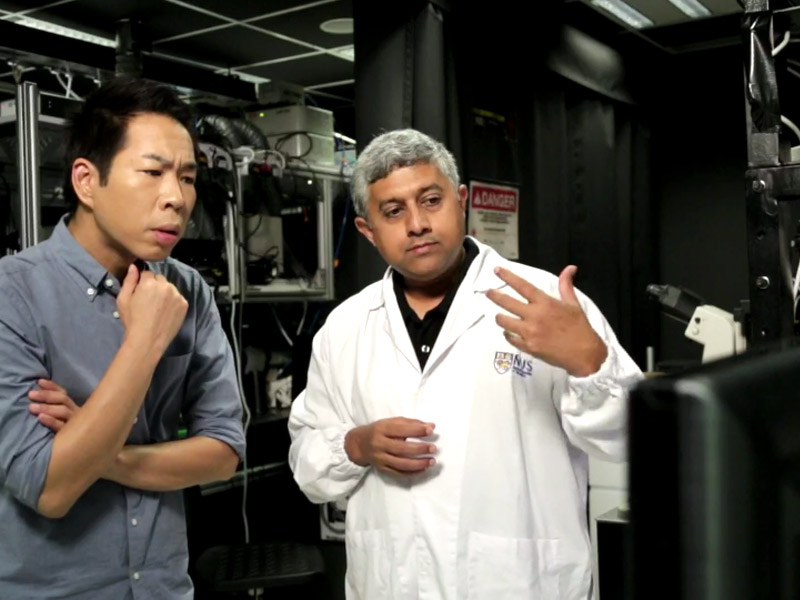Forces: Acting Far and Wide
Sci Comms | April 2015
For every action there is an effect. Pierce the skin of your fingertip and the painful effects at the site of injury will be immediate. What you may not realize is that other responses are also underway far from the injury site, from within your brain to the muscles of your arm.
Cells, like people, can sense when forces are applied to them. While scientists had begun to understand the effects that occur within the immediate vicinity of force application, little was known about the effects that occur at cellular sites further away from where force was applied. This question was addressed in a study led by scientists from the Mechanobiology Institute (MBI), National University of Singapore, in collaboration with scientists from the Department of Biology, New York University. Their work is published in the Proceedings of the National Academy of Sciences (Shao X. et al, Mechanical stimulation induces formin-dependent assembly of a perinuclear actin rim. Proceedings of the National Academy of Sciences. 2015. 112(20):E2595-E2601. doi: 10.1073/pnas.1504837112).
How local forces induce distant effects on actin remodeling
Cells are constantly exposed to physical forces, either from their environment or from neighboring cells. Instead of buckling under the influence of external forces, cells constantly respond and adapt by altering their cytoskeleton or switching on or off biochemical signaling pathways. The cytoskeleton, which lies within the cytoplasm, is a densely interconnected network of filaments, comprised primarily of a protein known as actin.
A distant effect
In order to respond to a dynamic environment, the actin cytoskeleton remodels itself into several highly ordered structures. For example, forces that push a cell forward can be generated by actin filament assembly at the front of the cell, into structures called lamellipodia. Similarly, actin filaments bundle into ‘stress fibers’ and line up parallel to the direction of forces. This occurs in response to stress.
Until now, most studies showed that such cytoskeletal reorganization occurs at regions in close proximity to where the force is applied, however it remained unclear how far such effects actually reached.
Researchers discover that localized mechanical stimulation could have distant effects on actin remodeling.
As it was known that external forces can influence gene expression, which takes place within the nucleus, deep inside the cell, MBI researchers speculated that mechanical stimuli could reach this region primarily by actin remodeling and this was tested using an atomic force microscopy probe to apply localized forces at the cell periphery.
The researchers discovered that localized mechanical stimulation could have distant effects on actin remodeling. Described for the first time was an actin structure that formed as a ring along the outer boundaries of the nuclear envelope. This structure, which they named the actin rim, was observed to be short-lived, disappearing when the forces were removed. The formation of the actin rim was explained by a prominent increase in actin filament assembly around the nucleus. This was found to result from biochemical signaling. Specifically, a rapid release of calcium ions within the cytoplasm occurred immediately after the application of force. The calcium ions act as biochemical messengers that relay the force signals to an actin regulatory protein, inverted formin 2 (INF2). INF2, along with other mediators, functions to bring together actin proteins dispersed in the cytoplasm, leading to their assembly into filament structures.
This study enhances our understanding of how forces applied on a small spot on the cell surface can travel across the cell and elicit responses at distant regions. It was proposed that the actin rim could serve as a means to transport DNA-regulatory signals from the cytoplasm into the nucleus. Furthermore, the formation of the actin rim may act as a shield to protect DNA from forces and stabilize nuclear functions.









